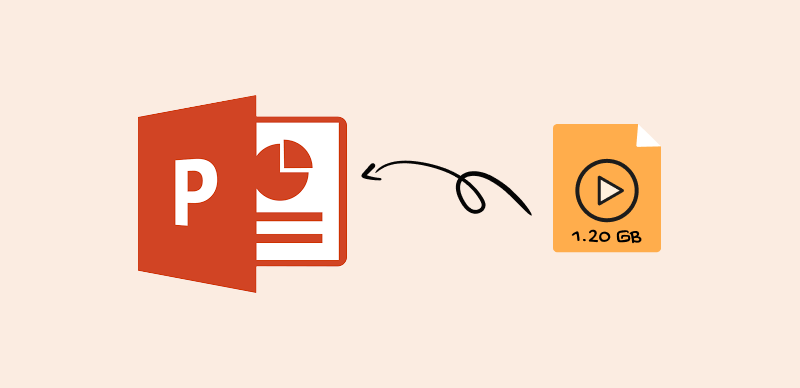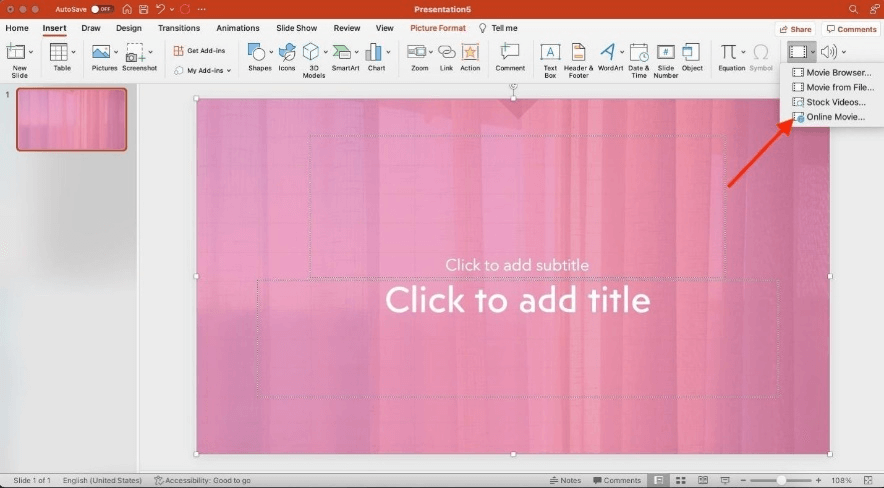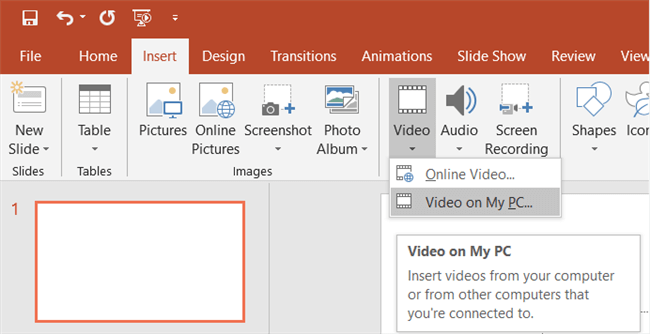
How to Embed a Video in a PowerPoint Presentation
Microsoft PowerPoint is the most commonly used software tool for multimedia presentations. It’s a part of the Office suite and is used by default by professionals in many different industries. This app lets you organize your data in the form of interactive slides, which can contain different types of elements including text, photos, videos, hyperlinks, etc. These slides can be visually arranged starting from existing templates, but need custom content to be effective.
In particular, the use of videos is desirable in order to make the video presentation more engaging and to provide a source of additional information for in-depth research. While this is technically not very complicated, many users still avoid putting videos in PowerPoint and stick to simple text and images. We will explain how to embed a video in a PowerPoint regardless of whether you have a file on your computer or you want to use a video that is posted on an online platform.
Further Reading: How to Download an Embedded Video >
What is Embedded Video and Why Is It Useful?
When a video is embedded into a certain software environment, it becomes a part of that environment and can be played directly without the need to activate any third-party tools. Videos are frequently embedded on websites and on social networks, but they can also be added to offline multimedia formats such as PowerPoint. The purpose of this procedure is to ensure the video will be experienced as a fully integrated element that requires no additional effort to inspect and consume and thus contributes to the expressive power of the multimedia.
There is plenty of evidence that videos can make a big difference when they are deployed in the most convenient format. Some of the major benefits arising from including an embedded video in a PowerPoint presentation include:
- Increased potential for direct interaction with the user and eliciting his further actions
- The possibility to explain more complex topics in a visual manner
- Simplicity of playing video directly from PowerPoint with a single click
- Flexibility for the presenter in terms of deciding when to play and pause the video
- An attention-grabbing tool that can liven up a long and data-intense presentation
- A channel for direct demonstration of products, procedures, and objectives
Embedding a Web-Based Video from YouTube or Another Platform
In this day and age, the internet is an endless source of high-quality videos that can be used to illustrate some viewpoints or phenomena or to educate the viewer about a specific topic. That’s why it can be very convenient to embed a video that already exists somewhere online into a new presentation you are putting together. Basically, you can choose any YouTube video that fits neatly into your PowerPoint and instantly make it a part of it. However, the video will remain hosted on the cloud servers, won’t add practically anything to the file size, and will only be viewable with an internet connection. Of course, it’s prudent to acknowledge the author if you are using videos that you don’t own copyright to.
PowerPoint allows you to insert links to online videos in your slides with just a few simple actions. Here is the sequence of steps that allows you to realize this.
Step 1. Open the online video and copy its URL
Step 2. Switch to a window with PowerPoint, find the appropriate slide, and open the Insert menu
Step 3. Click on Video, then select the Online video option from the drop-down menu

Select Online Video
Step 4. Paste the URL of the video into the dialogue box that appears on the screen
Step 5. Click Insert, and a video with a Play button will show up on the slide
Embedding a Local Video File from Your Computer
Another option for embedding videos into your PowerPoint presentation is to use a local source. This method also has some pros and cons, and might be the better approach in many situations. You need to have the full video in your possession and be aware that its inclusion might dramatically enlarge the .ppt file, while you are also limiting the utility of the video on a different device. On the positive side, you don’t depend on the availability of the remote platform and the quality of the Wi-Fi connection in order to be able to play the video.
All versions of PowerPoint allow the addition of locally stored multimedia to any slide. The procedure is just as simple as for embedding online hosted videos, and consists of the following steps.
Step 1. Open your PowerPoint presentation and go to the slide where a video needs to be added
Step 2. Enter the Insert menu, and then open the Video tab in the top toolbar
Step 3. From the available options, choose Video on My PC/Video from File

Choose Video on My PC
Step 4. Find the location on the computer where the file is saved, select it, and click Insert
Step 5. Use your mouse to move or resize the video playback box within your PowerPoint slide
FAQs about Embedding Video into PowerPoint
What is the difference between embedding a local video and just linking to it?
A linked video is not really a part of the PowerPoint file and must be played from your hard drive every time the link is clicked upon. That means the video won’t play normally in case the original file is moved to a different folder, or the PowerPoint presentation is opened on a different computer.
Will the embedded video remain playable if I send the PowerPoint via e-mail?
Embedded videos remain fully functional after the PowerPoint file is shared with a different user via Internet or another method. This remains true even if you used YouTube videos within the slides. The main reason for embedding multimedia is to make it available across all platforms where the PowerPoint might be opened.
Can I embed multiple videos on the same PowerPoint slide?
Yes, you can theoretically add as many videos as you like. However, since the amount of space on a single slide is limited, every additional video box will take away some visibility. Thus, you should avoid cramming too many embedded clips on the same slide and instead, add extra drops if you need to show more than a couple of videos.
Final Thoughts
The availability of high-quality videos has never been better, so we have more reasons to consider adding them to PowerPoint presentations. In a technical sense, this is extremely easy and can be done within a few minutes. Learning how to perform this operation is highly recommended for any professional who even occasionally uses PowerPoint in a serious context. Videos can make your presentation come to life, draw the audience in, and help you make a point that sticks in the mind for a long time. These benefits are sufficient to motivate you to at least try embedding videos into PowerPoint slides on your own.



